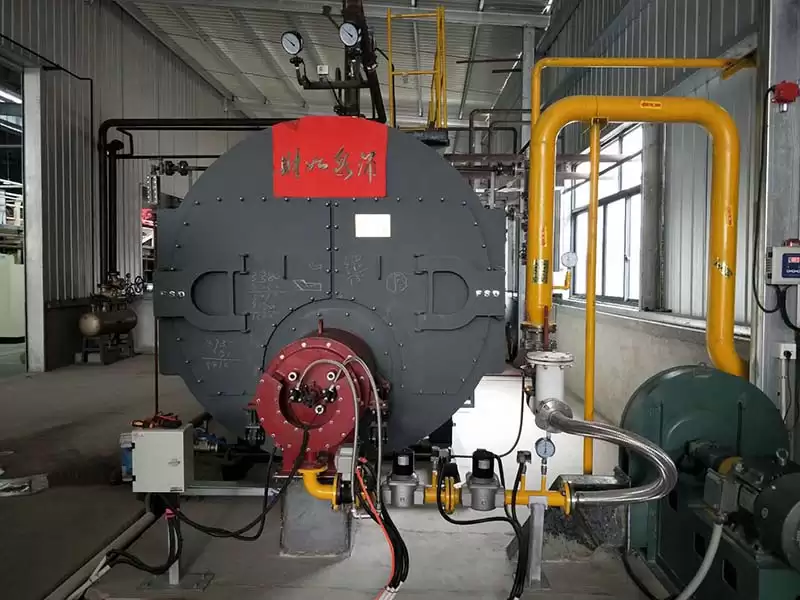what are the low-nitrogen technologies? We can divide it into three categories for elaboration.
1.No major changes to the combustion system ;
This generation of technology does not require major changes to the combustion system, but only adjustments or improvements to the operation mode or part of the operation mode of the combustion device. Therefore, it is simple and easy to implement and can be easily used in active installations. However, the reduction of NO x is very limited. The reduction of NO x emission concentration is mainly achieved through the following methods.
(1) Operation with low excess air coefficient .
This is a simple way to optimize combustion in your unit and reduce NOx production . It does not require structural modifications to the combustion device. The range of low excess air coefficient operation to suppress NO x production is related to the fuel type, combustion method and slag discharge method. The excess air coefficient during actual operation of the power station boiler cannot be adjusted significantly. For coal-fired boilers , reducing the excess air coefficient will cause fouling, slagging and corrosion on the heating surface, changes in steam temperature characteristics, and a decrease in economic efficiency due to an increase in fly ash combustibles. For gas and oil boilers , the main limitation is that the CO concentration exceeds the standard.
(2) Reduce the combustion air preheating temperature.
the generation of thermal NOx . This measure is not suitable for coal-fired and oil-fired boilers. For gas-fired boilers , it will reduce NO. obvious effects on emissions.
(3) Rich and light combustion technology.
This method allows part of the fuel to burn under the condition of insufficient air, that is, the fuel is too rich, and the other part of the fuel is burned under the condition of excess air, that is, the fuel is too lean to burn. Regardless of whether it is too rich combustion or too lean combustion, the excess air coefficient α is not equal to 1. The former α<1, the latter α>1, so it is also called non-stoichiometric combustion or deviation combustion. During rich-lean combustion, the excessively rich part of the fuel lacks oxygen and the combustion temperature is not high, so both fuel-type NOx and thermal-type NOx are reduced. In the lean part of the fuel, the amount of air is too large, the combustion temperature is low, and the amount of thermal NOx generated is also reduced. The overall result is lower NOx production than conventional combustion.
(4) Flue gas recirculation in the furnace.
method to reduce NOx emissions from coal-fired liquid slag furnaces, especially gas and oil-fired boilers . The usual approach is to extract the flue gas from the economizer outlet and add it to the secondary air or primary air. When the secondary air is added, the flame center is not affected, and its only function is to reduce the flame temperature, which is beneficial to reducing the generation of thermal NOx . For solid-state slagging boilers , about 80% of NO x is generated from fuel nitrogen, so the effect of this method is very limited.
For unstaged burners, mixing flue gas into the primary air has a better effect, but since the combustion conditions near the burner will change, the combustion process needs to be adjusted.
(5) Some burners stop operating.
power station boilers with multi-layer burner arrangements . The specific method is to stop the fuel supply to the uppermost layer or several layers of burners and only send air. In this way, all the fuel is sent into the furnace from the burner below, the burner area below realizes fuel-rich combustion, and the air sent from the upper layer forms a graded air supply. This method is especially suitable for gas and oil boilers without having to make major changes to the fuel delivery system. Germany has used this method on large lignite units with good results.
2. Characterized by air staged burners;
The characteristic of this generation of technology is that the combustion air is fed into the combustion device in stages, thereby reducing the oxygen concentration in the initial combustion zone (also called the primary zone) and correspondingly reducing the peak temperature of the flame. Measures belonging to this generation include various low NOx air staged burners that are currently widely used in power station boilers .
3. Implement a three-stage combustion method (or burner) with air and fuel classification in the furnace at the same time.
The main feature of this generation of technology is that air and fuel are delivered to the furnace in stages. In the primary zone, the main fuel burns under dilute phase conditions. After the reducing fuel is put in, an oxygen-deficient reduction zone is formed. NH 3 , HCN, C m Hn and other atomic groups precipitated under high temperature (>1200°C) and reducing atmosphere interact with The NO x generated in the primary zone reacts to generate N2. After the burnout air is input, a burnout zone is formed to achieve complete combustion of the fuel. Measures belonging to this generation are air/fuel staged low NOx swirl burners and three-stage combustion for tangential combustion mode.



 EN
EN  CN
CN AR
AR BG
BG HR
HR CS
CS DA
DA FR
FR DE
DE EL
EL HI
HI IT
IT JA
JA KO
KO PT
PT RO
RO RU
RU ID
ID UK
UK VI
VI TH
TH TR
TR FA
FA MS
MS BE
BE HY
HY AZ
AZ KA
KA BN
BN LA
LA KK
KK UZ
UZ AM
AM KY
KY